 It’s almost here – RootsTech 2020! The Genealogist’s version of Christmas! As this year marks the 10th anniversary, it should be the biggest conference yet! In the flurry of packing, writing, and planning, I wanted to take some time to cover my favorite features of this amazing conference – and why you should attend, either in-person or virtually.
It’s almost here – RootsTech 2020! The Genealogist’s version of Christmas! As this year marks the 10th anniversary, it should be the biggest conference yet! In the flurry of packing, writing, and planning, I wanted to take some time to cover my favorite features of this amazing conference – and why you should attend, either in-person or virtually.
Cutting edge tools, tips, and instruction: From the ginormous expo hall with the latest and the greatest genealogy tech tools to the most recent advances in DNA science and available resources, this conference should be on your yearly genealogy check-list – and here’s why. If you stay at home or travel to attend in person, your week (and the coming weeks) will be chock full of discovery and learning.
Here’s my formula for success with both attending options:
At Home 1: Watch the FREE live-streaming classes! There are about 21 sessions scheduled which can be enjoyed from the comfort of your own home, without spending a dime. But as a binge-watching society, I know those 21 sessions will NOT be nearly enough. The great news: You can purchase a Virtual Pass which will bring you another 30 sessions to watch from home! That’s right, the virtual pass brings your total viewing number to over 50! Seriously, with 300 sessions in person, 50 is a great chunk.
 At home 2: Download the syllabus material! You can do this as well, for FREE – for most of the classes! Not just the 50+ mentioned above – ALL 300+ sessions! Please take advantage of this option – the speakers spend a lot of time and effort making these materials thorough and useful – not to mention that each speaker can be a future reference for you when needing more education. Downloading is available through the RootsTech App.
At home 2: Download the syllabus material! You can do this as well, for FREE – for most of the classes! Not just the 50+ mentioned above – ALL 300+ sessions! Please take advantage of this option – the speakers spend a lot of time and effort making these materials thorough and useful – not to mention that each speaker can be a future reference for you when needing more education. Downloading is available through the RootsTech App.
At home 3: Take a virtual tour of the Expo Hall! The entire list of exhibitors can be found on the RootsTech website, and at your leisure, you can click on each one and explore their websites. Some may even have RootsTech special pricing, so be sure to explore and play with these latest genealogy tech toys and tools.
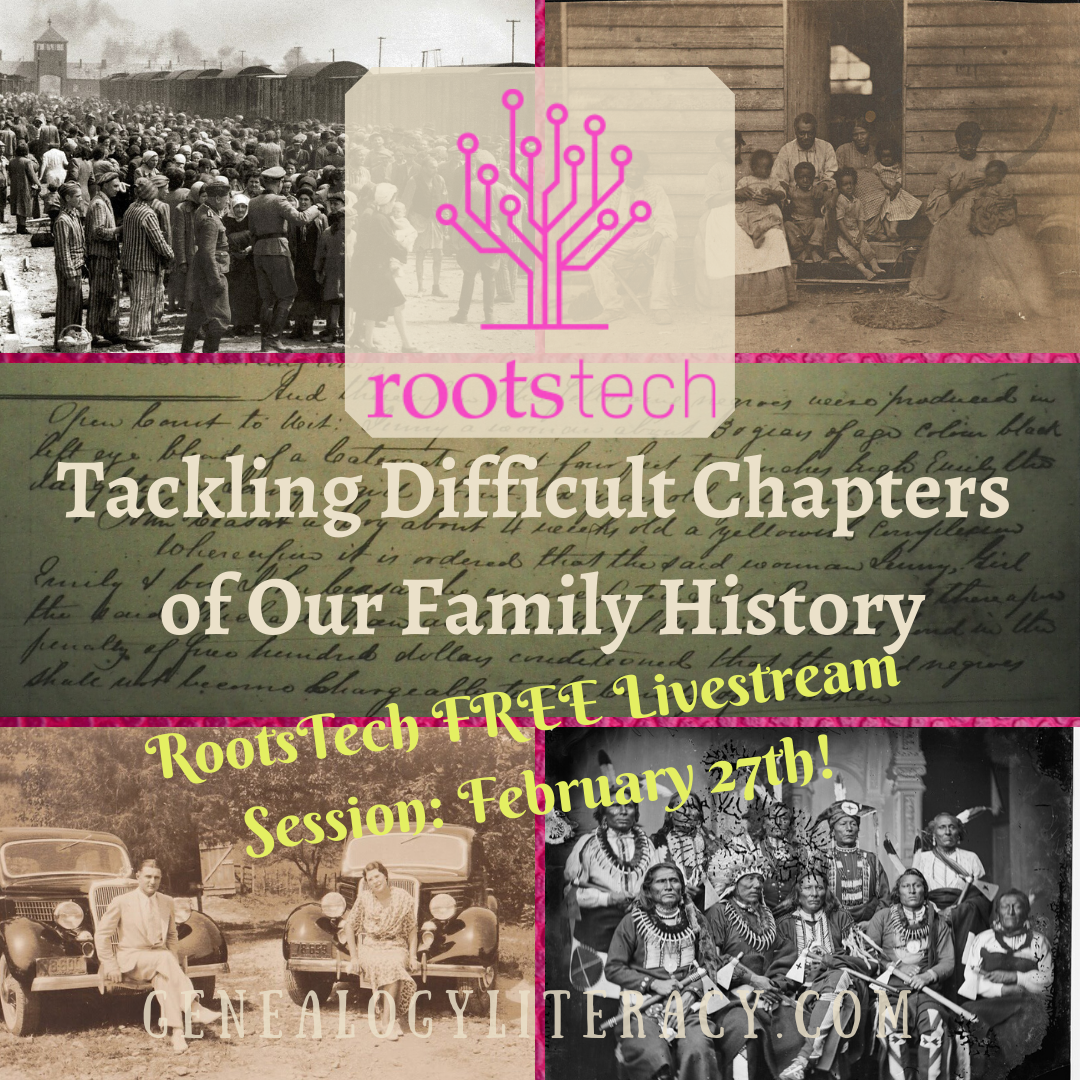 At home bonus: As most of you know, I am honored to have been selected as a speaker once again this year – which I will cover in more detail below. However, several folks have asked me about one particular session that resonates with many of us today: Tackling Difficult Chapters of Our Family History. I am doubly honored to announce that this session has been picked up for the livestream schedule! On Thursday, February 27th @ 3:00pm Mountain Time (5:00pm EST), you can tune in to watch my presentation in its entirety. If you miss it that day, the recording will be available shortly thereafter on the RootsTech.org website.
At home bonus: As most of you know, I am honored to have been selected as a speaker once again this year – which I will cover in more detail below. However, several folks have asked me about one particular session that resonates with many of us today: Tackling Difficult Chapters of Our Family History. I am doubly honored to announce that this session has been picked up for the livestream schedule! On Thursday, February 27th @ 3:00pm Mountain Time (5:00pm EST), you can tune in to watch my presentation in its entirety. If you miss it that day, the recording will be available shortly thereafter on the RootsTech.org website.
In Person 1: Happy Birthday, RootsTech! This year is going to be a huge blow out! Over 300+, and expanded session space and exhibit session opportunities, so you’ll want to be there if at all possible! As a speaker, I will be giving three presentations over the course of the conference:
My Session Schedule:
- A Digital Citizenship Primer for Genealogists: Wednesday, Feb. 26th @ 3:00pm
- Tackling Difficult Chapters of Our Family History: Thursday, Feb. 27th @ 3:00pm
- The Hoarder’s Guide to Family History Preservation: Saturday, Feb. 29th @ 1:30pm
Speaker Meet-Up Schedule: In lieu of questions during my sessions, I am going to try and snag a space in the speaker meet-up area for more in-depth conversations. As these tables are first come, first served, please pay close attention to my Twitter or Instagram feed to see when I’ve snagged a table for confab! If you don’t use either – you can see these feeds right here on this website – right sidebar.
In Person 2: Be sure to take care of YOU! Pace yourself – this is the big one! At 10 years old, this year’s event looks to be the biggest yet. According to the Salt Palace tour video that was put out by the conference organizers, the event is sprawling even more – including food and session rooms all the way down to the far end of the Palace – which is reminiscent of the first year, then only down the north side of the Palace. Also, be sure to watch the Road to RootsTech video series – this includes wonderful tips – which for this year, is VERY important! There is construction happening at the south end entrance to the Salt Palace – resulting in CLOSURE. From what we have seen so far, even the sidewalk around that entrance is closed. Another important point – this construction alters the bathroom plan. Go watch the latest video for updates.
In Person 3: Bags and Swag! Your badges have been mailed to most of you. For those of you who need them printed or re-printed, there will be several stations available to provide this service. And did I mention how cool the bags are going to be this year? Pink and black backpacks! Woot!
In Person 4: Do not forget to prioritize the Exhibit Hall! NEW THIS YEAR: Gone is the Unconferencing Session space, and in its place, a more expanded area for vendors to host instructional sessions. Yes, the Demo stage will still be there, but these expanded areas should be able to accommodate more attendees and provide more in-depth information compared to the brief Demo sessions. Look for spaces in the vendor areas as well as the EXPO HALL CLASSROOM, in the front, next to Trace’s Coaches’ Corner. In other words, build time into your schedule to fully explore this genealogy/tech wonderland. It is unlike any genealogy conference out there and should be enjoyed to the fullest!

 In Person 5: The Family History Library! OK, so if you live in SLC, you’re excused from this one. If you are visiting from out of town, you MUST take a little time to research those ancestors! This place is unparalleled – And they have graciously added late night hours to enhance your RootsTech/SLC experience! Just make sure you come prepared with a reasonable research plan, or you will quickly get overwhelmed by the resource buffet on each floor. Another tip: If the Discovery Center in the Expo Hall gets too crowded, head over to the permanent version on the first floor of the library!
In Person 5: The Family History Library! OK, so if you live in SLC, you’re excused from this one. If you are visiting from out of town, you MUST take a little time to research those ancestors! This place is unparalleled – And they have graciously added late night hours to enhance your RootsTech/SLC experience! Just make sure you come prepared with a reasonable research plan, or you will quickly get overwhelmed by the resource buffet on each floor. Another tip: If the Discovery Center in the Expo Hall gets too crowded, head over to the permanent version on the first floor of the library!
In Person 6: Stretch those introvert tendencies and talk to other attendees! These are your people – gathered together at the great watering hole of ancestral information. Even the vendors are there to learn more about you, the users! In fact, that was the original mission of RootsTech 2011 – getting the developers and users in one place to learn from each other. So, in 2020, let’s remember that original dream and make the genealogy landscape a better place because we made the effort to connect with those of like minds and pursuits.
Post Script: For additional survival tips, please see the official Survival Guide posted by the conference organizers, as well as many other ambassadors out there!
See you soon!

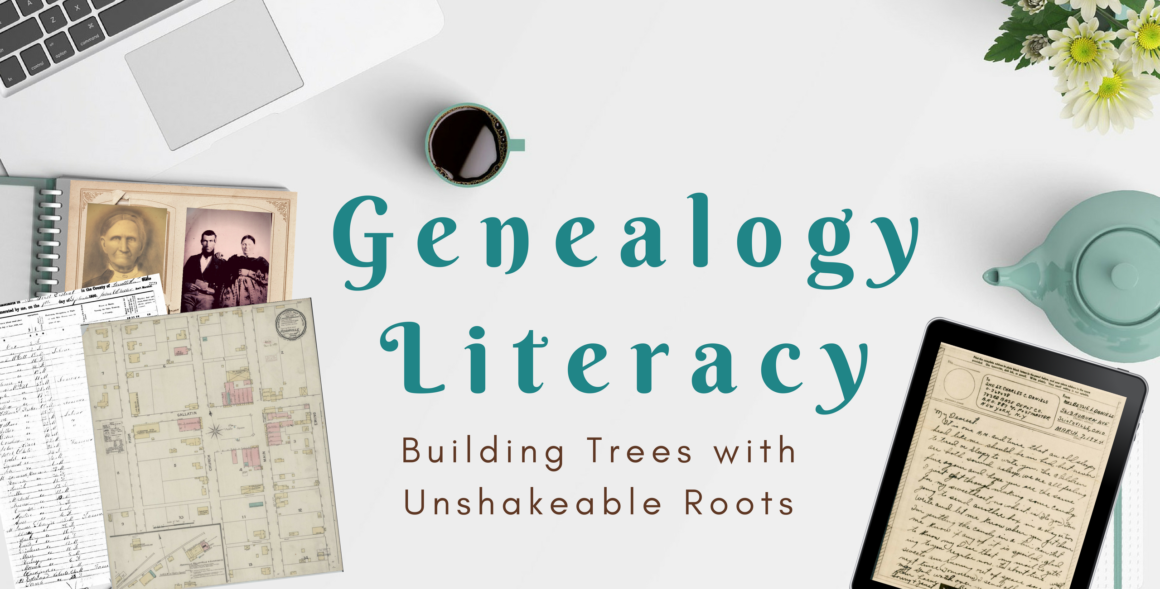

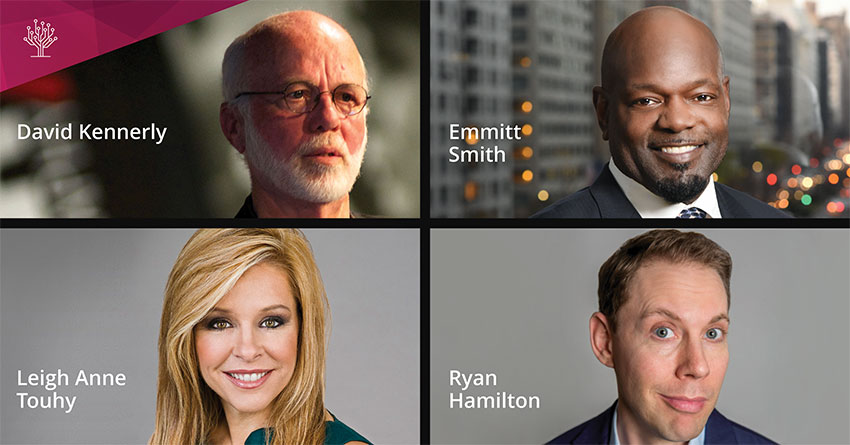


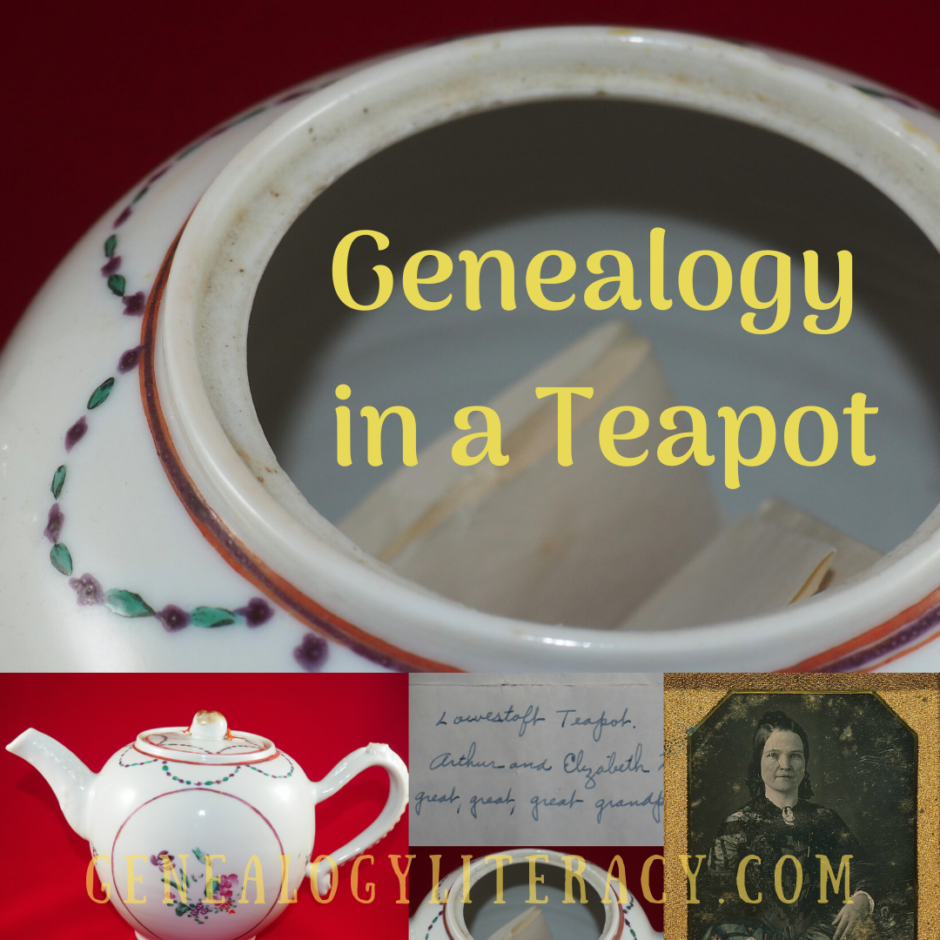


 After completing my obligatory happy dance at such a discovery, I got serious about matters and inquired further with the seller concerning the provenance. After all, I was afraid this person was parting with a family heirloom. On the contrary, while it had belonged to his mother’s estate, she had purchased it years ago at a Church rummage sale next door to a nursing home in Florida. A bit of a relief, but still sad, nonetheless.
After completing my obligatory happy dance at such a discovery, I got serious about matters and inquired further with the seller concerning the provenance. After all, I was afraid this person was parting with a family heirloom. On the contrary, while it had belonged to his mother’s estate, she had purchased it years ago at a Church rummage sale next door to a nursing home in Florida. A bit of a relief, but still sad, nonetheless.
 After Elizabeth and Arthur married in 1758, they have four more children. Arthur is listed in the Todd family history as “Major” Arthur McFarland. I have not been able to find record of this military service, but since he was born in 1720 and died in 1780, I’m guessing it’s not for service in the American Revolution. If it was for an earlier war, such as French and Indian, I’d have to keep digging. With a person of property during the Revolution, one naturally questions allegiance, and I’m happy to say that I found Arthur listed in the Philadelphia “Supply Tax” rolls for the year he died. This type of tax was taken from those who were supporting the cause of the Revolution.
After Elizabeth and Arthur married in 1758, they have four more children. Arthur is listed in the Todd family history as “Major” Arthur McFarland. I have not been able to find record of this military service, but since he was born in 1720 and died in 1780, I’m guessing it’s not for service in the American Revolution. If it was for an earlier war, such as French and Indian, I’d have to keep digging. With a person of property during the Revolution, one naturally questions allegiance, and I’m happy to say that I found Arthur listed in the Philadelphia “Supply Tax” rolls for the year he died. This type of tax was taken from those who were supporting the cause of the Revolution. Places like the MET and the Victoria and Albert Museum allow you to search their collections with terms you’ve come across. These are going to be wonderful experts in the matter, even over antiques dealers who might have good intentions, but lack sufficient expertise to get the variances correct. After all, no one is an expert in everything.
Places like the MET and the Victoria and Albert Museum allow you to search their collections with terms you’ve come across. These are going to be wonderful experts in the matter, even over antiques dealers who might have good intentions, but lack sufficient expertise to get the variances correct. After all, no one is an expert in everything.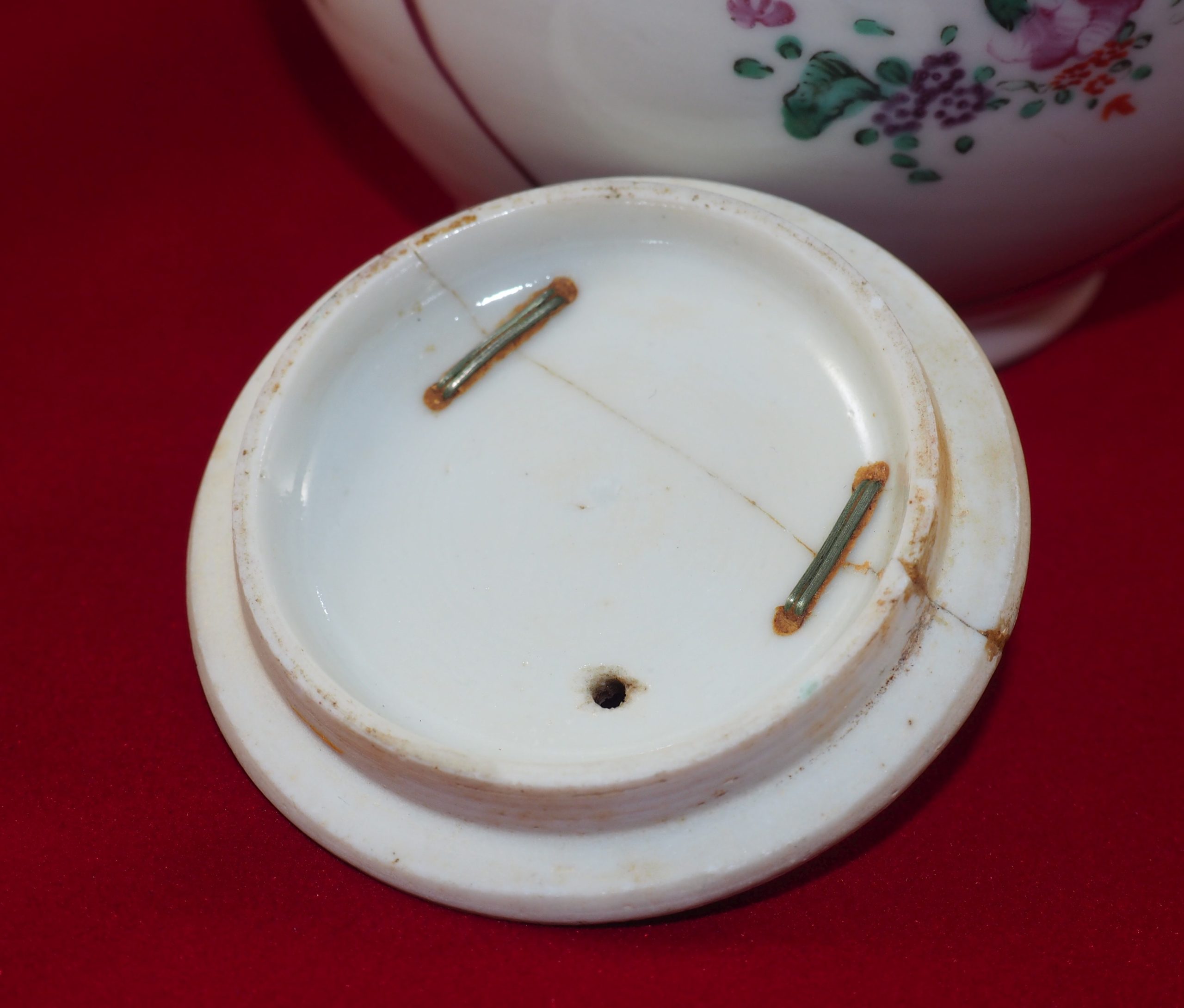
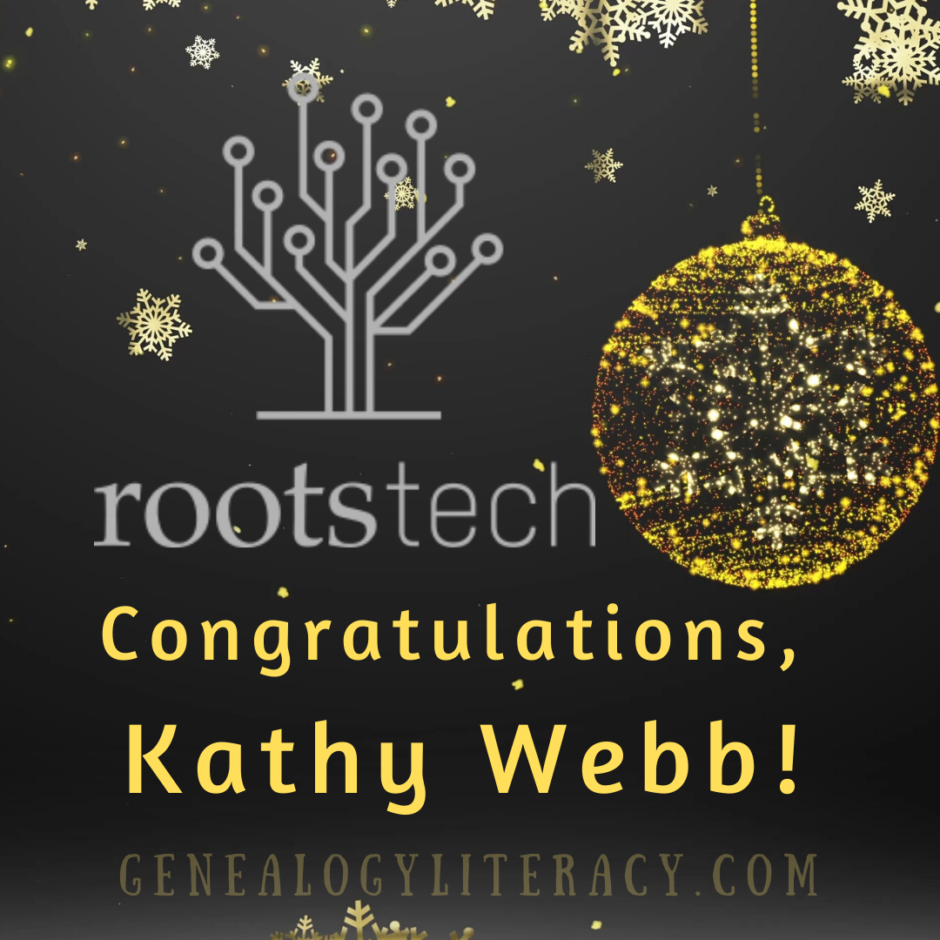
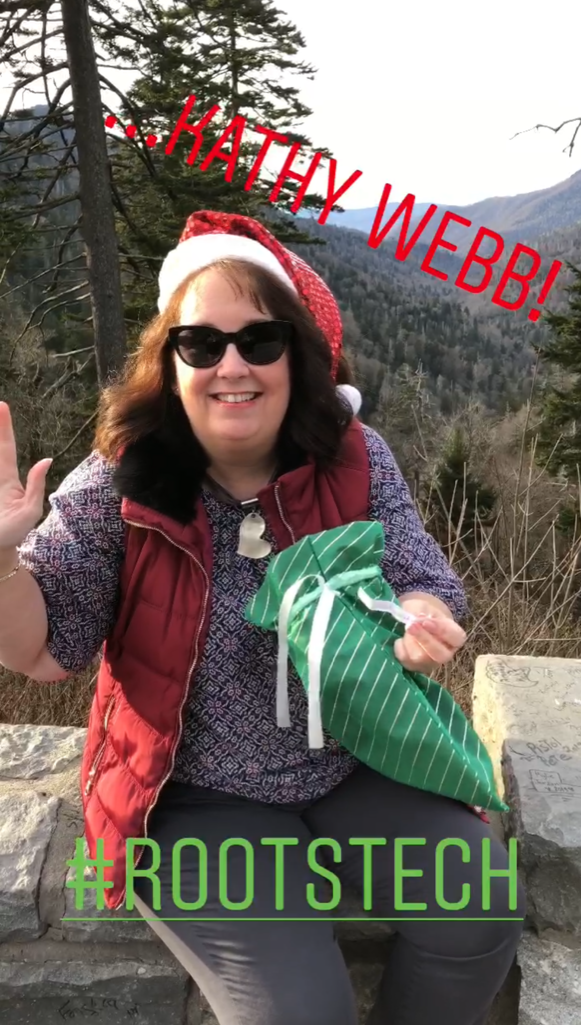 As the Holiday Season draws to a close, we need to be looking forward to RootsTech, 2020! As a RootsTech Ambassador, it was my privilege to pick the winner of my RootsTech full pass giveaway contest. On Christmas Day, my family and I drove up to the Smoky Mountains of Tennessee to announce my winner – The full video can be seen on Instagram or
As the Holiday Season draws to a close, we need to be looking forward to RootsTech, 2020! As a RootsTech Ambassador, it was my privilege to pick the winner of my RootsTech full pass giveaway contest. On Christmas Day, my family and I drove up to the Smoky Mountains of Tennessee to announce my winner – The full video can be seen on Instagram or 
 2: Swag Alert – they debuted a new swag bag for attendees this year. RootsTech London attendees received a pink backpack – and for RootsTech 2020, we’ll be getting blue backpacks!
2: Swag Alert – they debuted a new swag bag for attendees this year. RootsTech London attendees received a pink backpack – and for RootsTech 2020, we’ll be getting blue backpacks! A full 4-day pass to RootsTech 2020 (on-site in Salt Lake City), held February 26-29, 2020 – a $299 value! Don’t worry, if you’ve already registered, winning this contest would get you a full refund of your purchase price.
A full 4-day pass to RootsTech 2020 (on-site in Salt Lake City), held February 26-29, 2020 – a $299 value! Don’t worry, if you’ve already registered, winning this contest would get you a full refund of your purchase price.
 However…..I am totally against the military foot stones. I really hadn’t paid much attention to these, until they encroached upon my great grandparents’ plot.
However…..I am totally against the military foot stones. I really hadn’t paid much attention to these, until they encroached upon my great grandparents’ plot. Cemetery maintenance is a tough gig – I don’t envy anyone with this job. But maintenance is not just about mowing the lawn. It is necessary to look up and assess whether there are threats from above. As I have visited my 3rd great grandparents’ gravesite (1st generation immigrants from Germany), it is becoming harder and hard to snap a clear picture. Why? Because the neighboring pine tree is sinking lower and lower. It will fall one day, and when it does, it will take their beautiful obelisk with it. I need to contact the Church to have them remove this tree – but I shouldn’t have to – maintenance should include surrounding assessment – to make sure the stones are safe. It will be much cheaper to take the tree down than to restore a 19th century marble obelisk.
Cemetery maintenance is a tough gig – I don’t envy anyone with this job. But maintenance is not just about mowing the lawn. It is necessary to look up and assess whether there are threats from above. As I have visited my 3rd great grandparents’ gravesite (1st generation immigrants from Germany), it is becoming harder and hard to snap a clear picture. Why? Because the neighboring pine tree is sinking lower and lower. It will fall one day, and when it does, it will take their beautiful obelisk with it. I need to contact the Church to have them remove this tree – but I shouldn’t have to – maintenance should include surrounding assessment – to make sure the stones are safe. It will be much cheaper to take the tree down than to restore a 19th century marble obelisk.


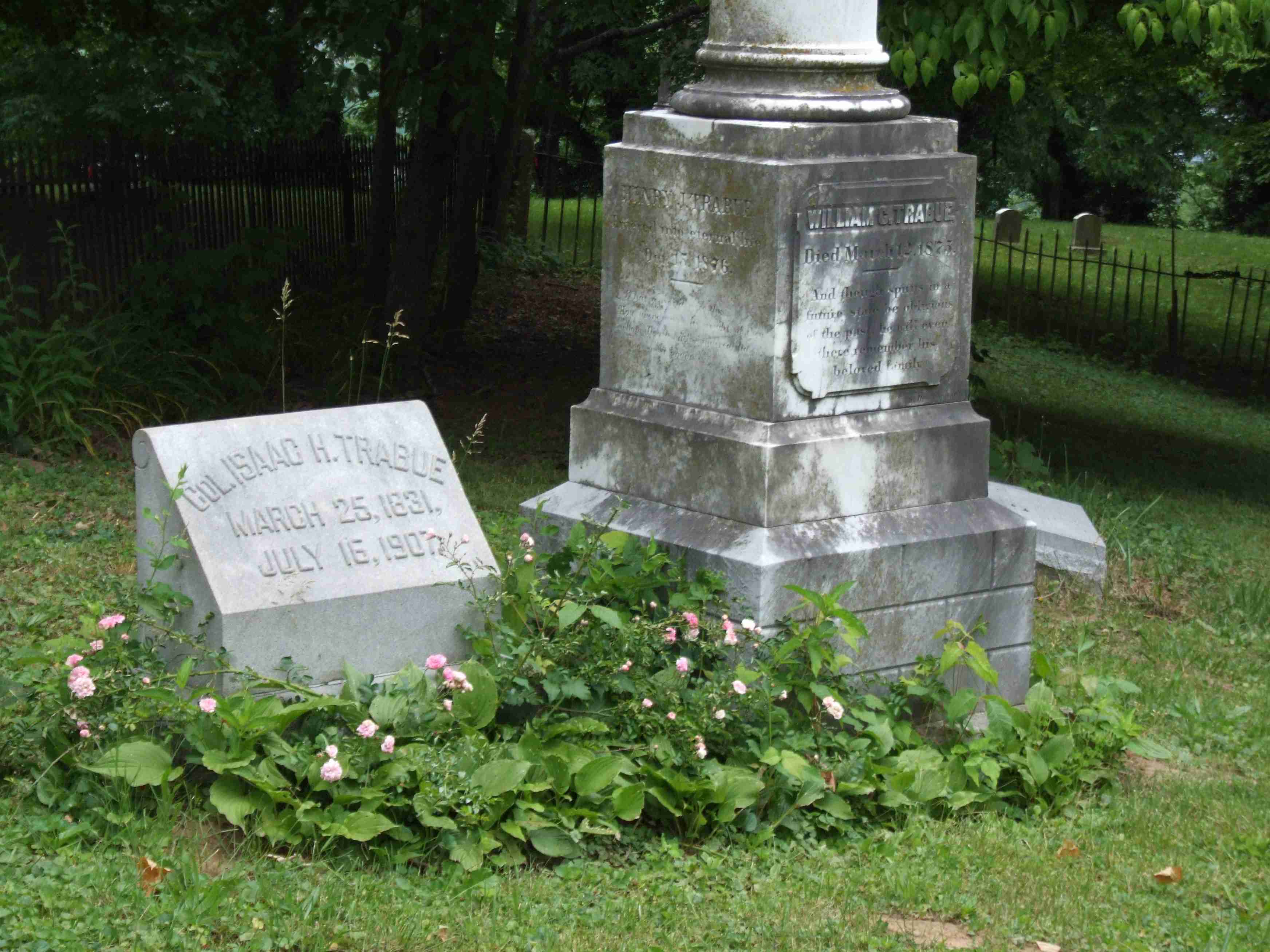
 These antique varieties are living echoes of migration – carried by our ancestors as they traveled west – usually planting a piece of their former home at their new destination. And the age of these varieties? Nothing to sneeze at – some rare varieties go back to the 1500s, but more commonly the 17th, 18th and early 19th centuries.
These antique varieties are living echoes of migration – carried by our ancestors as they traveled west – usually planting a piece of their former home at their new destination. And the age of these varieties? Nothing to sneeze at – some rare varieties go back to the 1500s, but more commonly the 17th, 18th and early 19th centuries. So – my pet peeve here? The above hyper-cleaning of cemetery areas. So many times I have witnessed beautiful heritage growths just eliminated by those who want to make mowing easier, or just “clean up” the overall cemetery as a local good deed. For many, I know their hearts are in the right place, but in reality, this is an all too common horrific practice. When many of our cemeteries were developed – especially those from the 19th century – their intent was to create a mourning garden. A place of peace and reflection that was designed with pastoral aesthetics in mind. Nature in all of its glory, with blossoms and trees comforting those who mourn the dearly departed. When we go in and strip them clean in an attempt to clear out the brush, we throw the baby out with the bath water. Please stop this – pay a local horticulturist to assess the cemetery prior to any clean-up effort. They can identify older plant specimens, and advise on how best to prune and clean up while maintaining the original garden design.
So – my pet peeve here? The above hyper-cleaning of cemetery areas. So many times I have witnessed beautiful heritage growths just eliminated by those who want to make mowing easier, or just “clean up” the overall cemetery as a local good deed. For many, I know their hearts are in the right place, but in reality, this is an all too common horrific practice. When many of our cemeteries were developed – especially those from the 19th century – their intent was to create a mourning garden. A place of peace and reflection that was designed with pastoral aesthetics in mind. Nature in all of its glory, with blossoms and trees comforting those who mourn the dearly departed. When we go in and strip them clean in an attempt to clear out the brush, we throw the baby out with the bath water. Please stop this – pay a local horticulturist to assess the cemetery prior to any clean-up effort. They can identify older plant specimens, and advise on how best to prune and clean up while maintaining the original garden design.



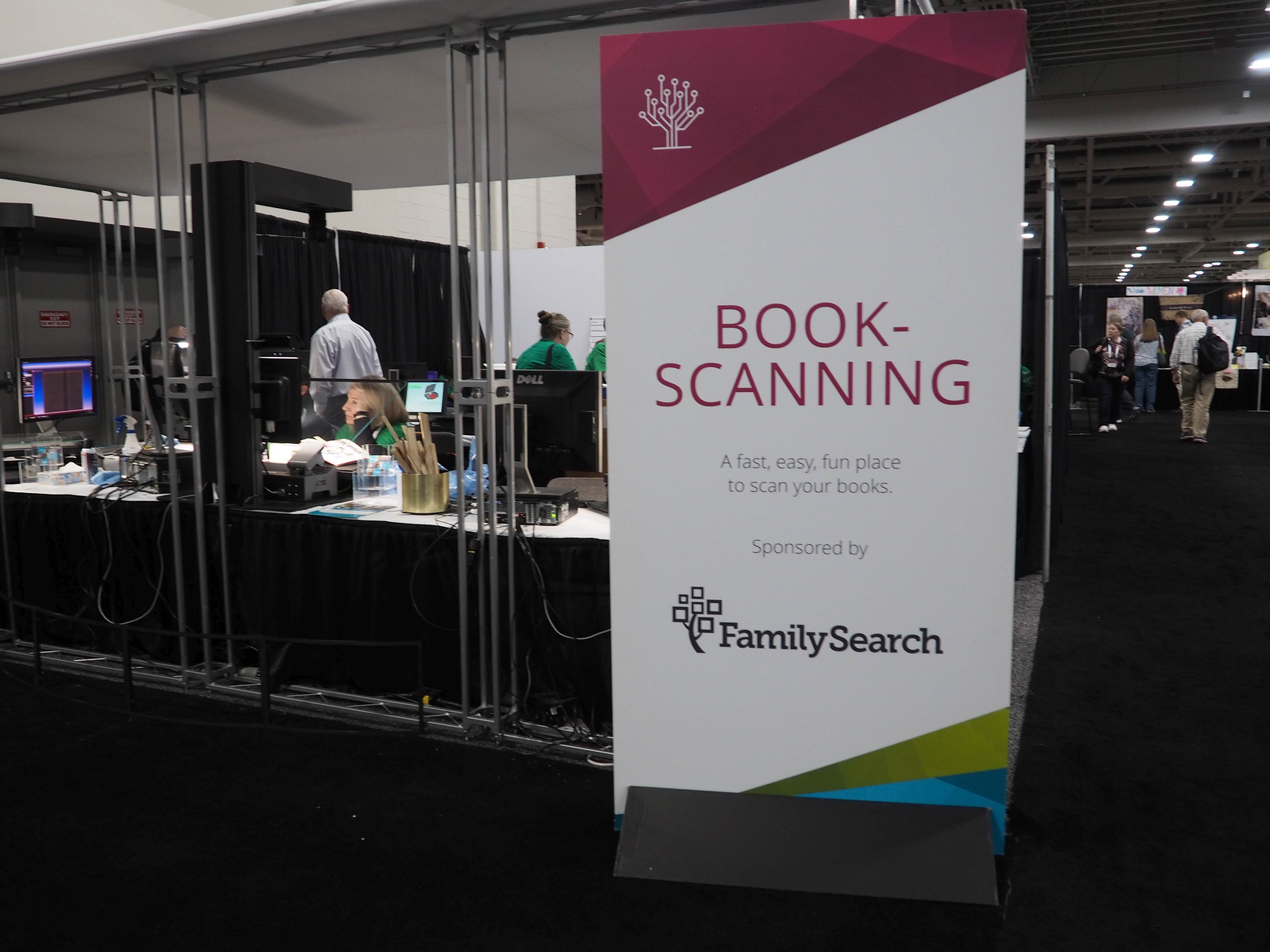


 Psssst….
Psssst…. Spreading out – By placing check-in over on the far side of the Salt Palace, along with a few of the sessions, there was more breathing room. Heading over in that area brought back memories from the early years when RootsTech was only on the north side of the Palace. Look how far it has grown!
Spreading out – By placing check-in over on the far side of the Salt Palace, along with a few of the sessions, there was more breathing room. Heading over in that area brought back memories from the early years when RootsTech was only on the north side of the Palace. Look how far it has grown! The Find Relatives at RootsTech Game – If you had ever entered even a small amount of generational information in the Family Search Family Tree, you were connected to the cousin three ring circus. But what a hoot it was! As the conference grew, there were over 9,000 people participating, and I matched as a cousin to over 2,500 of them – including David Rencher and Crista Cowan! One of the funniest moments was when I connected to a local Kentucky genealogist whom I’ve known for years, and live within 10 miles of, and who comes to RootsTech every year – Here we are – our cousin selfie! :
The Find Relatives at RootsTech Game – If you had ever entered even a small amount of generational information in the Family Search Family Tree, you were connected to the cousin three ring circus. But what a hoot it was! As the conference grew, there were over 9,000 people participating, and I matched as a cousin to over 2,500 of them – including David Rencher and Crista Cowan! One of the funniest moments was when I connected to a local Kentucky genealogist whom I’ve known for years, and live within 10 miles of, and who comes to RootsTech every year – Here we are – our cousin selfie! :









 crammed into the space of about two booth footprints. Really didn’t like this shrinkage, and while I did see groups using it – it was also placed in the very back of the exhibit hall instead of in the front where it used to be. Most people I talked to never found its location, and with very little signage – I would say this looks like the last year for the Unconferencing area – as I’m pretty sure we were witnessing the death knell. Some of the presenters mentioned their disappointment with the size and location in our Facebook group – but also complained about the name – saying it was unfriendly, and not appealing. Perhaps it could be resurrected as something slightly different? Break-out sessions perhaps? Obviously, the large exhibitors enjoy great success with their own areas of demos and discussions – so the concept is not a bad one. But it would be nice to have a more tailored area for folks to discuss genealogy issues – or meet up with speakers after their sessions, or programmers to discuss concepts with users (as was its initial purpose.) Conversely, I also understand usage and statistics – if people weren’t using them in the previous years, I can understand the reduction.
crammed into the space of about two booth footprints. Really didn’t like this shrinkage, and while I did see groups using it – it was also placed in the very back of the exhibit hall instead of in the front where it used to be. Most people I talked to never found its location, and with very little signage – I would say this looks like the last year for the Unconferencing area – as I’m pretty sure we were witnessing the death knell. Some of the presenters mentioned their disappointment with the size and location in our Facebook group – but also complained about the name – saying it was unfriendly, and not appealing. Perhaps it could be resurrected as something slightly different? Break-out sessions perhaps? Obviously, the large exhibitors enjoy great success with their own areas of demos and discussions – so the concept is not a bad one. But it would be nice to have a more tailored area for folks to discuss genealogy issues – or meet up with speakers after their sessions, or programmers to discuss concepts with users (as was its initial purpose.) Conversely, I also understand usage and statistics – if people weren’t using them in the previous years, I can understand the reduction. like a trauma victim – until there was only about a third of them left – was a red flag that most people didn’t understand the intended focus. As a whole – I would say this was RootsTech’s version of “Librarians Day” – or “Digital Archivist’s Day” – etc. Which makes all of this more intriguing. With the huge crowd coming in to learn about “Access and Preservation” – regular folks who were not information professionals – doesn’t that indicate that the general genealogy crowd is very interested in preservation and access – for their own collections? Perhaps? Or were they wanting to learn more about the efforts being made to place more unique material online? Or did they want to learn more about digitization best practices? This is an area RootsTech should investigate. It sure caught my attention when thinking about this after the event.
like a trauma victim – until there was only about a third of them left – was a red flag that most people didn’t understand the intended focus. As a whole – I would say this was RootsTech’s version of “Librarians Day” – or “Digital Archivist’s Day” – etc. Which makes all of this more intriguing. With the huge crowd coming in to learn about “Access and Preservation” – regular folks who were not information professionals – doesn’t that indicate that the general genealogy crowd is very interested in preservation and access – for their own collections? Perhaps? Or were they wanting to learn more about the efforts being made to place more unique material online? Or did they want to learn more about digitization best practices? This is an area RootsTech should investigate. It sure caught my attention when thinking about this after the event.



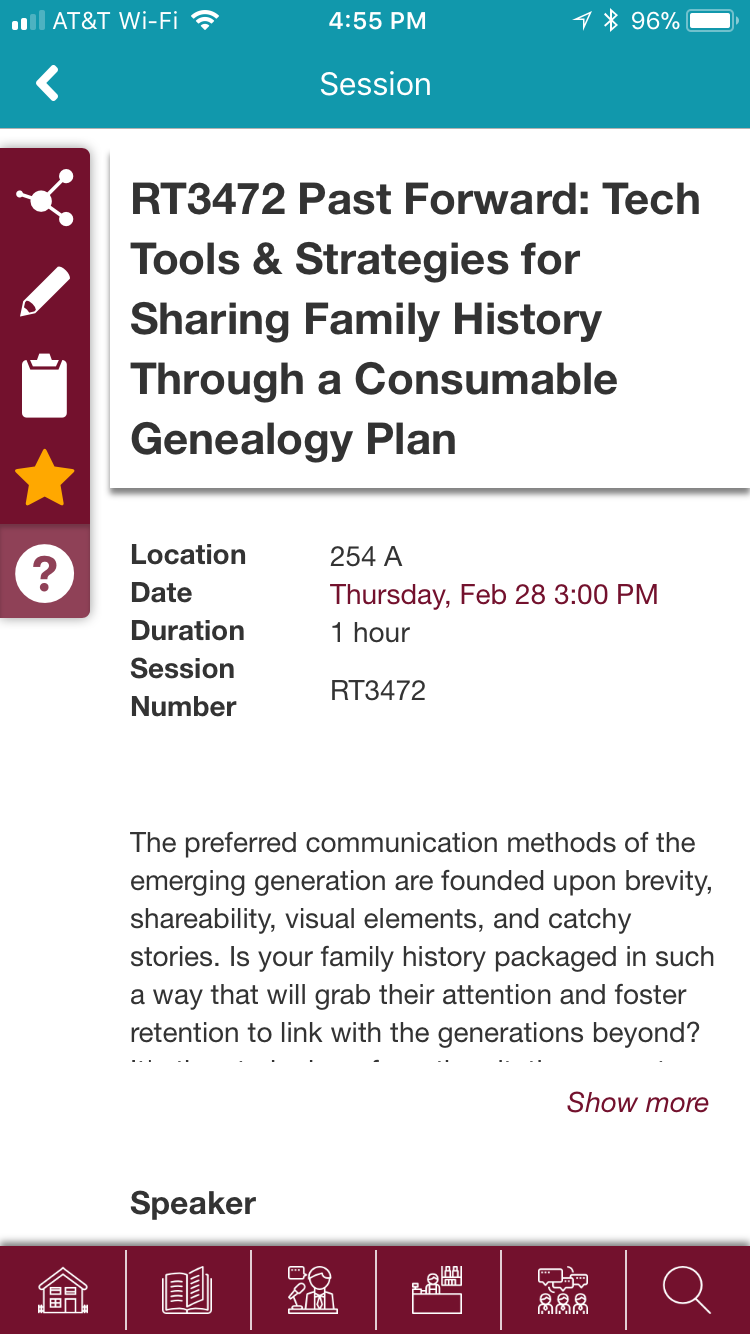 Use the App!! So much information in one little space – this is how you get to the syllabus material, schedule your session attendance, learn more about speakers/vendors, and keep updated on conference announcements. And don’t forget – they really want you to rate the sessions you attend through the app – it helps with next year’s planning, and determines whether your speaker receives any bonuses based on your rating. As a bonus, you can also make friends in the app, and learn about great places to eat.
Use the App!! So much information in one little space – this is how you get to the syllabus material, schedule your session attendance, learn more about speakers/vendors, and keep updated on conference announcements. And don’t forget – they really want you to rate the sessions you attend through the app – it helps with next year’s planning, and determines whether your speaker receives any bonuses based on your rating. As a bonus, you can also make friends in the app, and learn about great places to eat.

 aspect of RootsTech in the past, and some have given me a side eye, because they didn’t know what I was talking about – which is such a shame! From the very first year, these unconferencing sessions were implemented to encourage conversations – tech, genealogy, or both – programmers, genealogists, or hopefully both – all in rooms/booths they could schedule to talk about anything in the industry they wanted to cover. And this tradition has not wavered. In fact, this is one of my favorite things
aspect of RootsTech in the past, and some have given me a side eye, because they didn’t know what I was talking about – which is such a shame! From the very first year, these unconferencing sessions were implemented to encourage conversations – tech, genealogy, or both – programmers, genealogists, or hopefully both – all in rooms/booths they could schedule to talk about anything in the industry they wanted to cover. And this tradition has not wavered. In fact, this is one of my favorite things to do at RootsTech. The unconferencing sessions are along the North side of the Expo Hall. I will be hosting a session as a follow-up to my class on Consumable Genealogy – giving a live demo on using Canva and Pixabay – and there will be a couple of chat sessions about Genealogy in Second Life, hosted by the Second Life Virtual Genealogical Society – so be sure to check in at the unconferencing boards to plan out your participation.
to do at RootsTech. The unconferencing sessions are along the North side of the Expo Hall. I will be hosting a session as a follow-up to my class on Consumable Genealogy – giving a live demo on using Canva and Pixabay – and there will be a couple of chat sessions about Genealogy in Second Life, hosted by the Second Life Virtual Genealogical Society – so be sure to check in at the unconferencing boards to plan out your participation. THE Place to Bring Out Your Social Media ‘A’ Game! With all of the of the great tools at your fingertips, now is the time to hashtag it and post it – or storyboard it. You will connect with attendees and those attending from home. #rootstech #notatrootstech
THE Place to Bring Out Your Social Media ‘A’ Game! With all of the of the great tools at your fingertips, now is the time to hashtag it and post it – or storyboard it. You will connect with attendees and those attending from home. #rootstech #notatrootstech